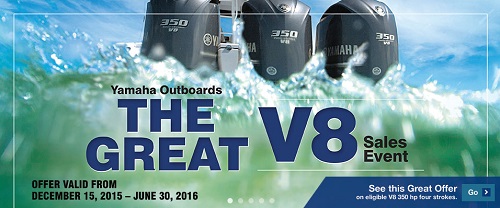 If you run any kind of skiff or bass boat in shallow water, consider this column a must-read. Electro-hydraulic jack plates are add-on brackets that provide two more adjustability dimensions to your outboard engine trim: straight up and down. A jackplate can improve both overall and shallow-water performance. The jack plate accomplishes several significant functions:
If you run any kind of skiff or bass boat in shallow water, consider this column a must-read. Electro-hydraulic jack plates are add-on brackets that provide two more adjustability dimensions to your outboard engine trim: straight up and down. A jackplate can improve both overall and shallow-water performance. The jack plate accomplishes several significant functions:

- It enables you to run in shallower water than allowed by a standard, fixed engine mount.
- It allows you to get up on plane in shallower water than allowed by a standard, fixed engine mount.
- When trimming an engine for best performance, a jack plate affords you better fuel economy, thanks to channeling thrust in the most efficient direction – parallel to the water’s surface.
Without a Jack Plate
In shallow water, your outboard’s skeg and propeller represents the deepest parts of your boat. Whether you need to get up on a plane from a standstill or you’re already running, you must always remember that your prop and skeg both hang below your hull.
When you’re ready to throttle up in shallow water, simply trimming up your drive actually hinders performance as it alters the direction of your propeller’s thrust to a less efficient angle. Additionally, tilting your engine degrades your performance as the water approaching the prop gets blocked by the cavitation plate as the angle of the engine changes outward. This is one reason why it takes longer to get on plane with your engine trimmed up rather than all the way down.
A better way to “shallow up” your prop and skeg is to lift them straight up rather than tilting them. Mounting your outboard to a hydraulic- or electric-powered jack plate affixed to the transom of the boat allows you to lift your engine vertically rather than change the angle of thrust.
How Does a Jack Plate Work?
On standard engine mounts (with no jack plate), the outboard must be mounted low enough so as not to cause cavitation when running into chop or executing turns. In calm water on a straight course, it could be mounted higher, but when it’s bolted tightly to the transom, moving it up or down obviously can’t be accomplished. That’s where a hydraulic/electric jack plate comes in.
Lifting the engine vertically keeps the plate above the propeller and aligned with the movement of the boat. Thrust channels directly parallel to the surface of the water – the most efficient direction.
A dramatically tilted engine throws a rooster tail of water up into the air, wasting energy. Plus, Newton’s Third Law of Motion says that thrust upward must equal thrust downward. If you’re in shallow water, you don’t want your boat to be pushed down, especially at the stern. An engine tilted up at a high angle to go across shallow water will raise the bow and lower the stern of a boat, making the draft of your boat deeper as the boat’s speed increases
A boat equipped with a jack plate can avoid all those negative consequences of tilting the engine. By simply raising the engine up with the jack plate until it is just on the verge of cavitation (drawing air from the surface into the propeller blades), you can start up and run in shallower depths than you ever imagined. If you want the ability to run with near impunity in shallow water, meaning without tearing up the bottom habitat or your equipment, one way or another you need to raise the skeg and propeller on your boat higher, and the jack plate represents the best possible means to accomplish that.

Hydraulic pumps mount inside the hull (upper corners), keeping the exterior clean.
One other thing many knowledgeable boaters ask: “Why doesn’t lifting the prop up like that raise it right out of the water?” For the same reason that high-speed performance boats use surface-piercing props. Once the water under the boat passes the trailing edge of the transom, it angles upward. So even when the prop is higher than the bottom of the boat, it sits far enough back to work in solid water.
Better Gas Mileage, Too
A jack plate can also increase fuel efficiency. Simple logic dictates that when you can channel thrust directly parallel to the surface of the water rather than up or down in comparison, you waste less energy. Additionally, the lower drive unit, prop and skeg all create drag in the water. With a jack plate, you can raise the engine higher in the water column, thereby decreasing drag. Certainly, you may need to lower it farther into the water in rough-water conditions or in turns. But calm conditions will allow you to run with the engine higher and burn less fuel. How much depends on many factors, but every little bit helps.

Today’s jackplates are compact and lightweight.
Make Planing Easier
You can also simplify your hole shot by using an hydraulic jack plate. First, raise the jack plate all the way up. Then, apply full throttle with the wheel straight ahead. Once up on plane, you can lower the jack plate if necessary. Rather than the stern “squatting down” in the water initially, the way it would with a standard engine mount and the engine trimmed up, the stern moves forward as the jack plate allows the engine’s thrust to work, keeping the prop high enough to miss the bottom. As the boat starts to come over onto plane, lower the engine to the proper level for cruising. Logically, you also experience less bow rise with the jackplate rather than engine trim.
Slowing down into shallow water essentially reverses the above procedure. As the boat slows, raise the jack plate; you can also tilt the engine out at the same time, so that as the stern drops to its lowest point coming off plane, the engine is already jacked up high and tilted out a bit to minimize draft.
Jack plates come in both manual and hydraulic versions, and size and setback depend upon the size of engine you plan to mount with it. Obviously, if you want to adjust the height of your engine while under way, the hydraulic type is the only way to go. Manual jack plates retail for anywhere between $150 and more than $1,000. Hydraulic models run from about $650 on the low end to almost $2,000 for a top-of-the-line model
With a little practice, you’ll soon see improved performance and gain the ability to fish in waters “the other guys” can’t.
Article produced by Yamaha Motors and was first published on their Boating Tips section – http://yamahaoutboards.com/yamaha-advantage/news/boating-tips

